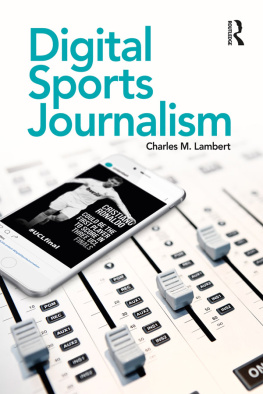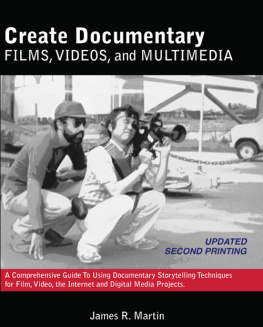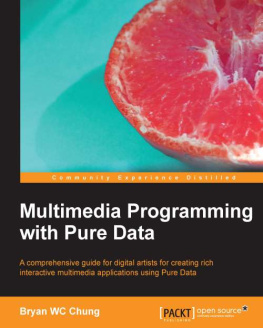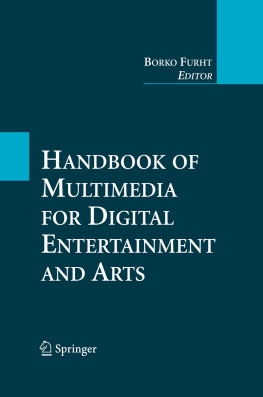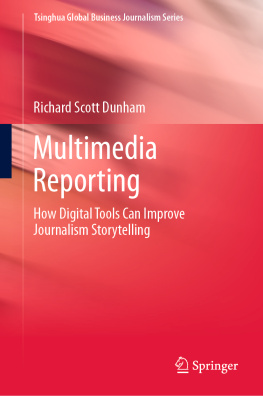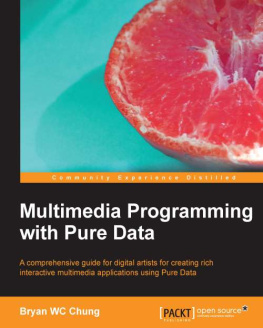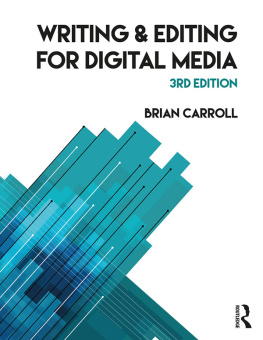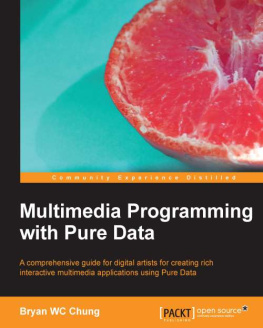The Digital Reporters Notebook
Powerful storytelling engages the senses, and today, there are more accessible digital tools available for telling multimedia stories than ever before. The Digital Reporters Notebook teaches practical digital storytelling techniques that journalists can put into practice right away, using the technology they already have in their pockets. Mark Blaine demonstrates how to gather information and organize it into a successful multimedia story without losing sight of the essentials of good journalism.
These forty brief chapters provide a versatile toolkit for multimedia journalists, including activities and exercises to build a strong foundation in digital storytelling. Readers will also want to try the interactive app, which includes videos and animations that bring the concepts and ideas in the book to life.
Topics include:
- Lighting & Framing
- Collecting Sound
- Scene Setting & Relevant Detail
- Interview Techniques
- Story Structure
- File Management
The Digital Reporters Notebook is ideal for online journalism courses and introductory reporting courses using a convergence approach.
Mark Blaine teaches multimedia storytelling techniques in the School of Journalism and Communication at the University of Oregon. He has been an investigative reporter, speaker, author, and editor for magazines and newspapers.
The Digital Reporters Notebook
Mark Blaine
First published 2014
by Routledge
711 Third Avenue, New York, NY 10017
and by Routledge
2 Park Square, Milton Park, Abingdon, Oxon OX14 4RN
Routledge is an imprint of the Taylor & Francis Group, an informa business
2014 Taylor & Francis
The right of Mark Blaine to be identified as author of this work has been asserted by him/her in accordance with sections 77 and 78 of the Copyright, Designs and Patents Act 1988.
All rights reserved. No part of this book may be reprinted or reproduced or utilised in any form or by any electronic, mechanical, or other means, now known or hereafter invented, including photocopying and recording, or in any information storage or retrieval system, without permission in writing from the publishers.
Trademark notice: Product or corporate names may be trademarks or registered trademarks, and are used only for identification and explanation without intent to infringe.
Library of Congress Cataloging-in-Publication Data
Blaine, Mark.
The digital reporters notebook / by Mark Blaine.
pages cm
Includes bibliographical references and index.
1. Video journalism. 2. Video recordingsProduction and directionVocational guidance. I. Title.
TR895.B53 2013
777dc23
2013013413
ISBN: 978-0-415-89860-7 (hbk)
ISBN: 978-0-415-89861-4 (pbk)
ISBN: 978-0-203-54144-9 (ebk)
Photo Credits
All photos and graphics Mark Blaine, except where noted below.
: all photographs Sung Park
: all Dan Morrison
: Courtesy of March
, 1st image: National Archives
This book distills an approach to teaching digital storytelling that weve refined over the past four years in our Gateway to Media series at the University of Oregon School of Journalism and Communication. The we I refer to is the amazing team of faculty, graduate students, staff and students who helped shape the content of the course. It was this group who showed that this way of teaching digital storytelling was doable on the scale in which we do it: up to 320 students per term with weekly two-hour labs.
Michael Werner and I piloted the course in winter 2009 after about a year of planning and discussion about how we might do it. As we scaled up over the next two years, Dan Morrison, Sung Park, Lisa Heyamoto, Ed Madison, Tom Wheeler, Alex Tizon, Scott Maier and Kelli Matthews joined in from our faculty to team teach various components and feed back what they found when they tried out the simple methods that are described in this book. Although they werent technically assigned to teach the class, but cared deeply about its outcome, Rebecca Force and Bill Ryan made signifi-cant contributions to the content and spirit of Gateway. Andre Chinn, Matt Schmidt, Ryan Stasel, Tom Lundberg and Jordan Sisk helped wrangle the technology we needed to do the course and managed thousands of requests for help and guidance from students and faculty alike. We regularly gathered and bounced ideas around both formally and informally, and that engagement with creating something new, compelling and valuable has been inspiring.
Dean Tim Gleason, Associate Dean Julianne Newton, and Al Stavitsky, Dean at the Donald W. Reynolds School of Journalism at the University of Nevada, Reno, provided leadership, wisdom and, at times, cover, as we managed the change that this thing brought to the school. Without them, this exploration wouldnt have borne fruit.
Lauren Kessler has been a great mentor. She and Duncan McDonald offered great guidance and support as we embarked on the curriculum revision that led to this book.
Our graduate teaching fellows helped with the teaching of the course and have been tremendously helpful in testing these concepts, feeding back, and offering fixes. Part of the goal of this was to find common, simple values for digital storytelling that could be taught by people with a variety of skill sets. The faculty and graduate teaching fellows gamely stepped in and made it work.
We have a few thousand students now who have taken Gateway and their contributions to the course are profound. Many felt an ownership of the idea and participated directly in shaping the course. We heard their critiques and solicited their opinions on how this was working and they answered honestly. For that, I am immensely grateful.
Dan Morrison and Sung Park provided some of the images for this book and have been sounding boards in the editing process. They are great colleagues and friends.
Deborah Morrison has been an advocate, a creative inspiration and a tireless cheerleader who has helped to make this approach make sense for a range of students, from advertising creatives to investigative reporters.
Thanks also to Jennifer Hahn for her input and skill with the cover images.
My editor at Routledge, Erica Wetter, has been a paragon of patience in the development of this book and I appreciate her willingness to take on a new idea and explore it in print and digitally. Her enthusiasm and sharp editing has been a great help.
Finally, my wife, Jessica MacMurray Blaine, has been a huge support through the whole process. It helps, too, that she knows a thing or two about project management and how to shepherd a wayward writer. This book is dedicated to her.
This is a simple book about patterns and habits of thinking. I hope it will also be useful for getting started and getting unstuck as a reporter and as a digital storyteller.
Multimedia is elemental to the way we tell stories, and technology is allowing us to explore media in ever more creative and powerful ways. Six years ago, we were challenged with integrating multimedia instruction into the curriculum at the University of Oregon School of Journalism and Communication. We wanted to do it at the beginning level for students so they could get their hands on tools early and get excited about telling digital stories. Wed use the tools as bait, which is what everyone fretted about, but teach story, which is as old as voices and firelight.


